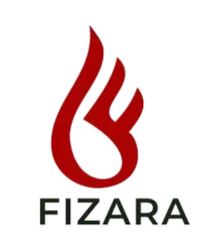In today’s fast-paced business environment, organizations are constantly seeking ways to improve efficiency, enhance communication, and standardize processes. Two tools that have emerged as critical solutions for achieving these goals are intranet software and standard operating procedure (SOP) software. While they serve distinct purposes, there is a surprising overlap in their functionalities and use cases. In fact, intranet software often mirrors SOP software in its ability to streamline workflows, enforce consistency, and centralize information. This article explores the similarities between these two types of software, their shared features, and how businesses can leverage them to optimize workplace operations.
Understanding Intranet Software and SOP Software
Before diving into their similarities, it’s important to define what each type of software does.
Intranet Software:
An intranet is a private network accessible only to an organization’s employees. Intranet software serves as a centralized platform for communication, collaboration, and information sharing. It typically includes features like document management, employee directories, news feeds, and task management tools. Modern intranets are often cloud-based, making them accessible from anywhere, and are designed to foster a connected and informed workforce.
SOP Software:
Standard Operating Procedure software is designed to create, manage, and enforce standardized processes within an organization. It provides a structured framework for documenting procedures, ensuring compliance, and training employees. SOP software often includes features like workflow automation, version control, and role-based access to ensure that employees follow established protocols consistently.
At first glance, these tools may seem unrelated. However, when examined closely, their functionalities often converge, making them complementary—or even interchangeable—in certain scenarios.
Shared Features: Where Intranet and SOP Software Overlap
The similarities between intranet software and SOP software lie in their shared objectives: improving efficiency, reducing errors, and ensuring consistency. Below are some key features that highlight their overlap:
1. Centralized Document Management
Both intranet and SOP software provide a centralized repository for storing and managing documents. In an intranet, this might include company policies, HR forms, and project files. In SOP software, it focuses on procedural documents, training manuals, and compliance checklists. By centralizing information, both tools eliminate the need for employees to search through multiple systems or rely on outdated files, ensuring everyone has access to the most up-to-date information.
2. Workflow Automation
Workflow automation is a core feature of both intranet and SOP software. Intranets often include tools for automating routine tasks, such as approval processes, onboarding workflows, or project management. Similarly, SOP software automates procedural workflows, such as compliance audits, incident reporting, or quality control checks. This automation reduces manual effort, minimizes errors, and ensures tasks are completed in a timely manner.
3. Role-Based Access Control
Both types of software allow administrators to assign role-based access to information and features. For example, an intranet might restrict access to sensitive HR documents to authorized personnel, while SOP software might limit access to certain procedures based on an employee’s role or department. This ensures that employees only see the information relevant to their responsibilities, reducing confusion and maintaining security.
4. Version Control and Audit Trails
Version control is critical for maintaining the accuracy of documents and procedures. Intranet software often includes version history features, allowing users to track changes to shared documents. SOP software takes this a step further by providing detailed audit trails for procedural changes, ensuring compliance with industry regulations. Both features help organizations maintain accountability and transparency.
5. Employee Training and Onboarding
Intranet software often includes modules for employee training and onboarding, such as e-learning platforms or knowledge bases. Similarly, SOP software is frequently used to train employees on standardized procedures. By integrating these functionalities, organizations can create a seamless onboarding experience that combines general company information with role-specific procedures.
Use Cases: How Intranet Software Enforces SOPs
In many organizations, intranet software is used to enforce SOPs, effectively blurring the lines between the two tools. Here are some real-world examples:
1. Healthcare: Streamlining Patient Care
In healthcare, SOPs are critical for ensuring patient safety and regulatory compliance. Many hospitals use intranet platforms to centralize SOPs, such as infection control protocols or emergency response procedures. By integrating these documents into the intranet, healthcare providers can ensure that staff have instant access to the latest guidelines, reducing the risk of errors.
2. Manufacturing: Standardizing Production Processes
Manufacturing companies rely on SOPs to maintain consistency in production processes. Intranet software can be used to document and distribute these procedures, ensuring that all employees follow the same steps. Additionally, intranets can include features like task checklists and real-time updates, helping workers stay on track and adhere to quality standards.
3. IT: Managing Incident Response
In the IT industry, SOPs are often used to manage incident response and troubleshooting. An intranet can serve as a hub for these procedures, providing IT teams with quick access to troubleshooting guides, escalation protocols, and contact information. This ensures that issues are resolved efficiently and consistently.
Benefits of Integrating SOP Functionalities into Intranet Software
For many organizations, integrating SOP functionalities into their intranet software offers several advantages:
1. Reduced Redundancy
Maintaining separate systems for intranet and SOP software can lead to redundancy and inefficiency. By consolidating these tools, organizations can streamline their workflows and reduce the need for duplicate data entry.
2. Improved Collaboration
Intranet software is inherently designed to foster collaboration. By incorporating SOPs into the intranet, organizations can encourage employees to share feedback, suggest improvements, and collaborate on procedural updates.
3. Enhanced Accessibility
Modern intranets are often cloud-based and mobile-friendly, making them accessible from anywhere. This is particularly beneficial for organizations with remote or distributed teams, as it ensures that employees can access SOPs whenever they need them.
4. Cost Savings
Investing in a single platform that serves both intranet and SOP purposes can be more cost-effective than purchasing and maintaining separate systems. Additionally, it simplifies training and reduces the learning curve for employees.
Choosing the Right Tool: Intranet, SOP Software, or Both?
While intranet software can often serve as a substitute for SOP software, the right choice depends on an organization’s specific needs. Here are some factors to consider:
- Complexity of Procedures: If your organization relies on highly complex or regulated procedures, dedicated SOP software may be necessary to ensure compliance and provide advanced features like audit trails.
- Size of Organization: Larger organizations with multiple departments may benefit from a dedicated intranet platform that can handle a wide range of functionalities, including SOP management.
- Budget Constraints: For smaller organizations or those with limited budgets, integrating SOP functionalities into an existing intranet may be the most practical solution.
Conclusion
Intranet software and SOP software may have different origins, but their shared features and objectives make them powerful tools for streamlining workplace efficiency. By centralizing information, automating workflows, and enforcing consistency, both tools help organizations operate more effectively. In many cases, intranet software can even serve as a comprehensive solution for managing SOPs, reducing the need for separate systems.
As businesses continue to evolve, the lines between these tools are likely to blur even further. By understanding their similarities and leveraging their strengths, organizations can create a more connected, efficient, and compliant workplace. Whether you choose to use intranet software, SOP software, or a combination of both, the key is to align your tools with your organizational goals and processes. In doing so, you’ll be well-equipped to navigate the challenges of the modern business landscape.
If you find this article helpful, click here for more.









